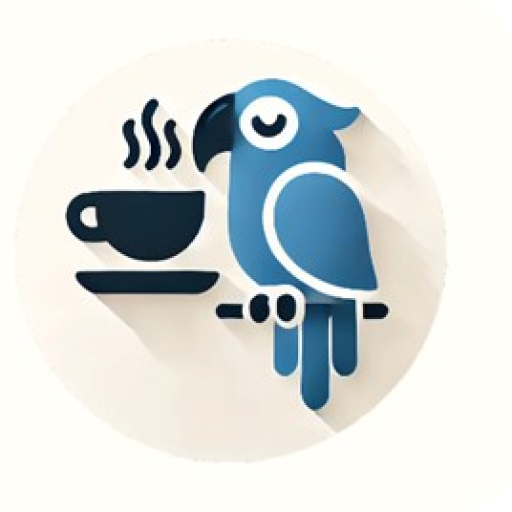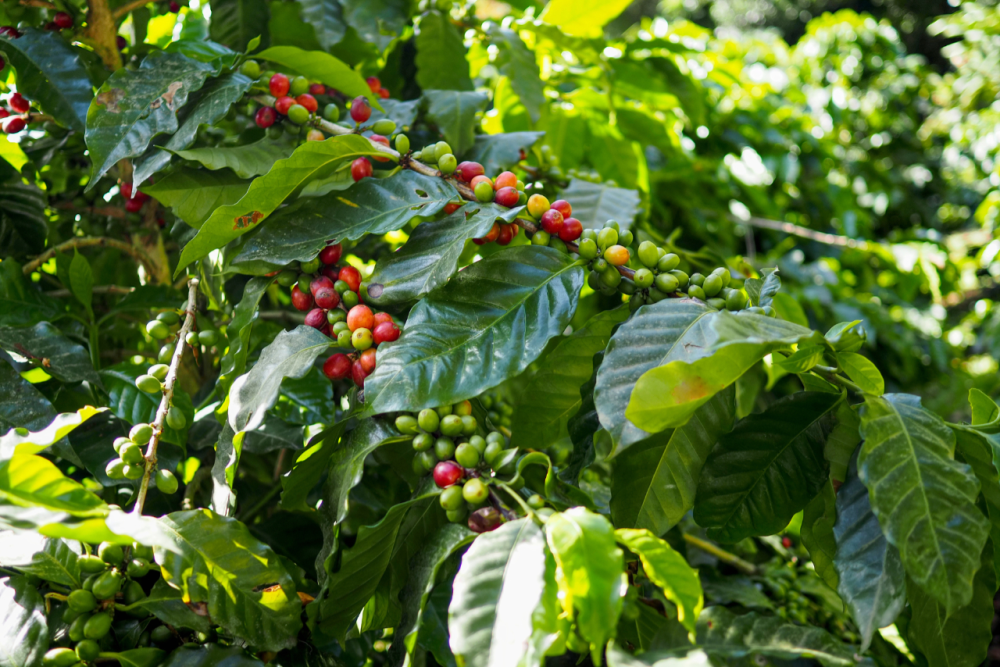About two years after hurricane Maria, when most things were starting to look normal again and greenery, though comprised predominantly of vines, had begun to return to the mountain, I paid a visit to my neighbour, Vovo. A prominent member of the Giraudel Flower Growers group, I’d known her for quite a while. Her house and garden, though still a little scarred, were looking homely again. She has a lovely garden, perhaps the closest to an English cottage garden that I’ve ever seen in this part of the world, with a wide variety of flowering plants filling every little space. She also had a large shade tent – now sadly ragged and in need of new netting – where she grew anthuriums and roses of many types and colours that she used in arrangements – usually wreathes and bouquets – which she sold to make ends meet. I’ve often used her garden as in informal nursery, paying for far less than she manages to cram into my bucket. On this particular day, I was looking for coffee.
Vovo had told me that although she had had an Arabica tree for years, she had never harvested the cherries. She just pruned it every now and then, using it as a windbreak for some of her more delicate plants and cuttings. All around it grew Arabica seedlings and it wasn’t long before I had a bucketful.
Back home, I planted them out in growing bags, watered them well, and left them in the shade of a night-blooming jasmine tree. This was the beginning of my coffee journey.
Today, I have four rows of Arabica ‘trees’ – I prune them to head-height after every season – with a narrow dirt path between them for inspecting, pruning, and harvesting. Altogether, there are just over 50 trees with around 35 currently mature enough to produce cherries. They sit right at the back of my garden, behind the house, on a slope in front of the eastern windbreak. The elevation is almost exactly 2,000 feet.

Before hurricane David in 1979, the farmer who owned and worked the land we now call ours, and which was part of a much larger estate, grew oranges here and referred to this little corner as Orange Field. The hurricane destroyed his estate and broke his heart. He never returned to farming and instead decided to sell off part of his land in small parcels. Orange Field was never worked again and lay fallow. The soil is therefore fertile and free of manmade chemicals.
In 2022, I travelled to Colombia, visiting the cities of Bogota and Medellin. I also went to a coffee farm about two hours out of Medellin and learned about coffee farming and processing first-hand. I also learned what a labour-intensive process it is. This particular farm, sitting at an elevation near to 6,000 feet, grew around 400 acres of Arabica coffee and employed the whole village when it was time to pick cherries. One of the most valuable things I learned was how to properly prune and pick ripe cherries – rolling them to leave the stem on the plant. A healthy stem flowers and produces cherries again next season. I also learned that medium roast is the best way to bring out the taste of the bean (according to my Colombian teachers). They said that if you like stronger coffee, you just add more, but you never roast dark. They also said Peruvian coffee stinks of lama shit. The Colombians believe their coffee to be the best in the world. Who am I to argue?
I usually begin picking ripe cherries in September, but this year they were about six weeks early. The mountain has certainly been feeling warmer. I practice selective picking, taking only the ripe ones. Once started, I usually have to harvest every two weeks until the festive season. This is when I prune the trees down to head height and remove any second stems that have sprouted during the growing season.

After I’ve finished picking, I pulp the cherries. In the beginning, I did this by hand with buckets and a potato masher. But that was nuts. So I imported a small manual pulper from Colombia which turns a five hour job into five minutes. Its a clever piece of machinery, splitting and separating the beans from the pulp. When I’ve finished, I have a bucket of pulp and a bucket of beans. The pulp goes back to the coffee trees as fertilizer.

I wash the coffee beans and then leave them to sit in water for a few minutes, allowing the bad beans to rise to the surface. I remove these and then wash them again. Now, I leave the beans to sit in a bucket of water overnight to allow a small amount of fermentation to take place. The next day, I wash the beans thoroughly and then spread them out on a homemade drying rack that sits in the sunshine and is covered at nighttime.
If there’s decent sunshine, the beans are usually dry after about a week. I turn them several times a day. Then I store them in hessian bags for about four more weeks.
Hulling the dry beans is a manual process – literally one at a time on a Saturday morning while I listen to English football commentary via web radio. I’ve looked up ways to automate this process but have found none of them satisfactory. Blenders usually cause too much destruction to the bean and you still have to filter out the husks. Some people stuff beans into bicycle inner tubes and roll them – but that’s just nuts. So, unless I come across the perfect tool, I’ll continue to shell each one manually in a Zen-like state of mind, listening to my team lose again.
Immediately after hulling a pile of beans I roast them. My roaster is cheap and simple – basically a hotplate with a rotating bar, lid, and temperature control. Through trial and error, I’ve figured out a combination of temperature and time that works well enough, giving me a pretty even medium roast. I’ve thought about upgrading, of course, but I’m alright for now.
It’s my aim to make enough coffee to last us the whole year while also having enough to give to family and friends as gifts. I’m pretty close. I think when all 50 trees are producing, I’ll easily reach that goal. I’m not interested in producing my Blue Parrot coffee commercially. When I enjoy a cup on my porch, looking out at the sea, it’s rewarding enough.

